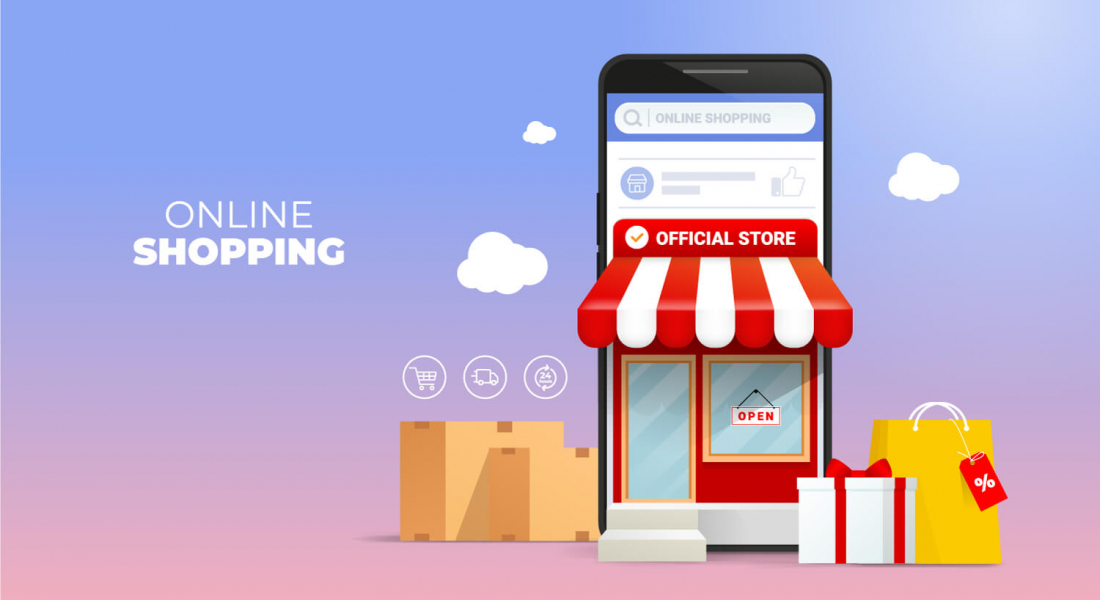When you’re building an ecommerce website from scratch, there are many key features that every ecommerce website should have, regardless of the industry, the size of the business, or the type of products you’re selling. Without these core components, your online store won’t be generating the sales and conversions you need to grow your business.
The online space is a competitive, consumer-driven market that is constantly changing and adapting. Your ecommerce website is your online home, and for businesses without a brick and mortar location, it’s all you have.
Here are the 25 must-have ecommerce website features every site should have in order to function at peak performance and grow into a successful online store. Think of this as your checklist for building an efficient, successful, and scalable ecommerce website.
1. Attractive Visuals
Your website needs to make a good impression in order to keep your potential customers browsing on the page, while communicating your brand tone and message. That’s where good graphic design comes in.

The graphics and design of your website need to convey strong visuals that entice your potential customers while establishing brand recognition. Think about those big retail brands like Amazon. You always know Amazon when you see that curved arrow or the lowercase letter “a,” and that logo is always visible no matter what page of the site you’re browsing. This type of brand recognition is important because you want your brand’s logo or design to stick in someone’s head and become synonymous with the products or services you sell and the value you provide. If they’re not ready to buy your product yet, when the time comes that they do need to purchase it, your brand will be at the top of their mind.
Without good graphic design, your website looks out of date and inconsistent and it’s hard for people to make those brand connections between you and the value you provide. There is a lot of competition out there for ecommerce brands, and recognition is what will get you noticed and keep your customers from giving their business to a competitor.
2. High-Quality Product Images
An ecommerce business is all about selling that product to someone who probably won’t see it in person. Images are the key that will sell your product. No one is going to spend money on a product if they don’t know what it looks like, and with the major competition of the Internet, low-quality images won’t cut it. In fact, low-quality images can hurt your brand because it makes you appear as though you don’t sell enough products to pay for better images, or that you don’t put a lot of effort into showcasing your products with pride.
You should also feature different angles of your product, and if you can, showcase it in different contexts. Some fashion websites have integrated features that pull photos of their clothing from their Instagram feeds, which can be great for that additional context. One company, Vanity Planet, found that integrating Instagram images on their product pages increased checkouts by 25%.
You don’t need to do something this complex, but you do need to give the customer an idea of how the product looks and what it will look like when it’s in use. That’s why clothing stores show models wearing the clothing from different angles so you can see the back and sides, and even potential accessories to pair it with. You want your product to be showcased in the best light so it looks as attractive and appealing as possible, enticing your customers to buy.
3.Detailed Product Descriptions
Your images are going to be the main selling point for your product, but you need to have descriptions that tell your customers the features of the product. People aren’t going to spend their money on something if they don’t have the information they need to decide. This information can include sizing, material, washing instructions, ingredients, depth, and anything else relative to the context of the product.
For example, if you sell rugs, you need to provide size and material information so they know if it’ll fit in their living room before they make the purchase. If you don’t provide those details, they’re not going to spend their money to take the chance that something may or may not fit.
Today’s consumers are more conscious about the products they purchase. Think about the needs of your target audience and make sure they’re met in the product description. Don’t write a novel – people don’t want to read paragraphs and paragraphs of information, but they do want to know the key details before they commit to buying. For example, if you sell eco-friendly products to sustainably conscious moms, make sure you display that your product is BPA-free, made from recycled materials, or features safe ingredients.
4. Mobile Responsive Design
If you’ve ever done any research on the best features and tips for making a successful website, you’ve probably already read about how important mobile responsive design is for any type of website, no matter what it is. This is incredibly true for your ecommerce website, too.
Your online store needs to be functional and user-friendly for people who are browsing from their smartphones and tablets. In today’s mobile, digital world, the majority of people are using their phones and tablets for searching, purchasing, and browsing online. Studies show that 82% of Internet users in the United States have made at least one purchase online from their phone or tablet. That’s a big market of people who may be interested in your product.
A good mobile responsive ecommerce website makes it easy for people to browse, add products to their cart, and find what they’re looking for without having to constantly adjust the content ratios. Mobile responsive websites automatically adjust for the size of the screen and make menus simpler to navigate with just a thumb.
If your website isn’t mobile responsive, you’ll be missing out on a major source of conversions and sales. It only takes a few seconds for people to decide if they want to use your website or not, and if they have to put it in a lot of effort just to navigate through it, they’ll leave. People who don’t have a good experience on your site from their phone are very unlikely to return to your site at all, and are more inclined to take their business to a competitor. Here are some examples of the best mobile websites.
5. A Search Bar
When people shop online, many people are looking to browse. But many other people are looking for something specific. The people who are looking for specific things are more likely to be the people who will convert to customers and make a purchase, so you need to make sure that you tailor your website to help them reach the purchasing point. A big part of this is your search function.
A search bar is a feature that many websites sometimes overlook, but it’s essential for user experience and can have a big impact on conversion rates. Make sure your search bar is easy to find and stands out. You can do this by making it a different colour and making it static so it’s featured prominently on every page. Another feature you can use is an auto-complete function that reduces the amount of time your customer has to spend typing in the product name. Printerland, a company that added an auto-complete function to their search bar, saw a 6x conversion increase in doing this. It will work for you, too.
Without a search bar, those people who are looking for something specific won’t find the products they need. And they’re not going to browse through every one of your products to find it (or find out if you have it or not). Instead, they’re going to go elsewhere, and the chances of them returning in the future are slim.
6. An Easy, Simple Checkout
The checkout function is the core of your ecommerce business. This is the process that your customers go through after they select the products they want to buy and are ready to complete the purchase. Without a checkout function, you can’t sell your products. With ecommerce, that’s the whole concept, so you obviously really need this feature or you simply won’t make any money. Not only that, but you’ll anger your potential customers when they can’t actually buy the items they want.
It’s extremely important that your checkout is functional and user-friendly because the checkout process is where shopping cart abandonment takes place. As many ecommerce business owners will tell you, shopping cart abandonment (when customers add items to their cart and then leave the site before completing the purchase) is the biggest factor that hinders conversions and sales. Now, there are many factors that can impact shopping cart abandonment, but a big part of it is the checkout process. If it’s too complicated or difficult to navigate, people will just leave and give up on the purchase. The less steps your customer has to go through, the lower your shopping cart abandonment rate will be.
7. A Guest Checkout Option
Not everyone wants to make an account on your website in order to buy something. In fact, these days people are so bombarded with different accounts they have to make and the number of passwords they have to remember that they’re only going to be willing to make an account if they get some kind of benefit from doing so. As WooCommerce puts it, people suffer from “new account fatigue” and it can hurt your sales.

Some people just want to purchase the item and be done with it. If you require that every single purchase needs to have a registered account on your site, those people will leave and take their business elsewhere instead of signing up. It comes back to the fact that people don’t want to take extra steps or put in extra effort to get the things they want or need.
A guest checkout option lets customers purchase the items without having to set up an account and store personal information in your database. While it’s really great to have users set up accounts so you can collect new contacts and increase re-marketing opportunities, sometimes it’s best just to take that loss if it means keeping a customer happy. The better the experience is, the more likely they’ll come back and make more purchases in the future.
8. A Payment Gateway
To make your sales happen, you need a payment gateway implemented on your website. A payment gateway is a service that authorizes and processes online payments and transactions. It receives your customer’s details and money, and then connects to payment provider networks, like credit card companies, to authenticate it and then transfer the funds to you. You’ll need to connect your payment gateway to your merchant account so that you can receive money into your company’s bank account.
There are a few different types of payment gateways you can use to accept payments on your ecommerce website. Some payment gateways are set up for specific payment methods, like credit cards, while others are designed to function as both the payment gateway and the merchant account, like PayPal. Most payment gateways charge you a percentage of your total transactions instead of a monthly account fee to use the service. Stripe is an example of a commonly used payment gateway system that will process payments from all major credit cards and send the money directly to your bank account. After you create an account and connect your information, most of the time it just takes a little bit of code to get your payment gateway up and running on your site.
You absolutely cannot have an ecommerce website without a payment gateway. How is someone going to buy your product online if they can’t actually buy and pay for it? You could rely on the notion that they might call or come visit you in store to get it, but chances are they won’t want to take all those extra steps and will just go to a competitor website and order it there where it’s more convenient. Thus, you lose sales.
9. Multiple Payment Options
Not everyone has a credit card. But most people have online banking, PayPal, or other alternative payment options. Not only that, but not everyone is ready and willing to give out their credit card details to a website, especially if they’ve never used that website before. Online banking and PayPal come with consumer protections that make people more comfortable with making a purchase. If you add these options to your site, you’ll be able to increase opportunities for more sales.
Most ecommerce websites have a payment gateway, like Stripe, as well as integration with PayPal at the very least. This lets you expand your methods of payment and appeal to more people, giving them plenty of options to pay that suit their own preferences. Consider advanced payment options like ApplePay if your ecommerce platform or payment gateway system supports them.
If you don’t use multiple payment options and only take credit cards, you could be losing out on sales opportunities from people who don’t have a credit card or don’t want to use theirs. Broadening these options means you are opening up for more sales and more growth.
10. A Blog or Section For Articles
Many people who operate ecommerce websites don’t really think about blogs because they’re usually associated with websites that are more focused on text and content. And many of the sites that do tend to forget their blog or don’t prioritize it. However, blogs are important for ecommerce websites for a number of reasons.
SEO: With ecommerce websites being primarily image-based, you need some extra content on your site to increase your SEO efforts. The more content you have on your site, the better you can rank in search engine results pages, and the more online traffic you can generate. Blogs are a great way to add more targeted keywords and valuable content to your website that will be indexed by Google and other search engines.
Providing value to your audience: The more value you provide to your audience, the more they’ll become long-term customers and visitors. Blogs can help you provide information, helpful tips and resources, and solve problems for your audience. Even if they don’t become customers right away, people will read your blog and remember that you helped them, and when it comes time to make a purchase, they’ll think of you and trust you.
Establishing your credibility and expertise: A blog is a great way to establish your expertise within your field, especially if you don’t have a brick and mortar store. You need to ensure that your audience knows that you are a credible, trusted source within your niche or field, and you can do this by posting articles and content that provide information and value to your audience.
Promoting new products: Your blog can also be a great way to promote new products and talk about new sales that are coming out to inform more people. Tell the story behind the products, showcase them in different contexts, and give people information on why these products are so great. Since blogs help your SEO strategy, this is a great way to help share information about those new products with as many people as possible to increase sales.
Communicating news and updates: The same goes for news and updates. A blog is the easiest and best way to share company news. You can share your blog post on social media to create a consistent, cohesive message, and it will have more long-term presence if it’s posted on a blog as opposed to a social media post that gets buried after a few weeks.
The bottom line is that if you don’t implement a blog on your ecommerce website, you could be missing out on a ton of opportunities for SEO, customer relations, user experience, and online presence.
11. SEO Integration
Most ecommerce website platforms have integrated features that help you optimize your website for SEO. These include plugins and features that allow you to easily update elements that carry SEO weight, such as your meta descriptions, titles, image title tags, URLs, and headings. When you choose an ecommerce platform to build your website on, make sure it has these features available.
SEO is one of the most important things for your ecommerce website because driving online traffic is going to be your biggest driver of sales. The more eyes you can get on your products, the more sales you can generate. If you don’t have SEO integration, it’s going to become very difficult to generate online traffic and you’ll have to rely on word of mouth referrals or big budget advertising campaigns. Since SEO is organic, it has a high ROI and can fit in with any budget.
If you’re not really sure how SEO works, it’s worth your while to talk to someone who has experience in SEO strategy or hire a digital marketing team to run an SEO audit and optimize your website for you. This is a very important component of your online presence and not something you should overlook.
12. Security Features
Any time someone is putting their credit card information into a website, they need to know that their information is safe and secure. Ecommerce websites are a big target for hackers and cyber-criminals, and people aren’t willing to give out their personal information to just anyone.
To secure your website, you need an SSL certificate. People can tell if a website has one because secure sites have an https:// address and a little lock icon in the address bar. That means people know when they’re using a site that isn’t secure and this can scare potential customers away. You can usually get an SSL certificate directly through your hosting service. Most ecommerce platforms won’t let you complete any transactions without an SSL certificate, so without one you won’t be able to make any sales or generate any revenue.
You can also choose to implement two-factor authentication for users who log in to your website. This means that people will log in with their username and password, and then receive a confirmation code to their phone or email that they need to input to access their account. This is optional, but will give your customers some extra peace of mind that their accounts are secure.
If you don’t offer your customers the peace of mind that their information is secure, they will not be willing to make a purchase from you. With more consumer awareness out there, more people today are concerned for their privacy and online security, and you need to give people a reason to trust you.
13. Shipping Integration
Of course, if you’re selling products online, you need to be able to ship them as well. Without shipping integration, you can’t get your products to your customers.
Many ecommerce platforms have plugins or integrations with shipping companies like FedEx and UPS that can help you print out customized labels and stay organized with order fulfillment. You do have a couple choices here as well – you can offer free shipping or flat-rate shipping or you can calculate shipping costs and charge the customer. This will really depend on what products you sell and how you ship them (for example, will you be shipping internationally or domestically?).
You should be sure to communicate shipping information throughout your website to prevent shopping cart abandonment. 55% of shopping carts are abandoned because of unexpected high shipping costs. Additionally, communication on shipping helps to keep customer satisfaction high. Statistics show that 53% of online shoppers in the U.S. won’t purchase a product if they don’t know when it will arrive. Try implementing a shipping calculator based on your customer’s postal or ZIP code so there are no surprises. Additionally, offering free shipping over a certain amount is a great way to entice people to spend more money.
14. Contact Information
Give your customers as many ways as possible to contact you. This also helps to legitimize your business and establish your credibility as a valued, trusted company. It also keeps you available in case people need to ask you questions.
If people can’t figure out how to contact you, that credibility will decrease in their eyes and they may not trust you as a retailer. There aren’t a lot of things that hurt a brand’s reputation more than being unavailable or unreachable when a customer has a problem they need to solve. Especially when it comes to selling products online that may need to be returned.
Keep your contact information in your footer in addition to a contact page. When it’s in the footer, it’s easily locatable and accessible for everyone, no matter what page they land on. You should at the very least include an email and phone number, as well as your social media handles – social media is a great way to offer customer support in a visible way, so other potential customers can see how friendly and helpful you are. This way, they can see that you’re being open and transparent and are ready to provide support if they need it.
15.Terms and Conditions
A detailed Terms and Conditions page helps protect your company from liability and other legal issues. Almost every single website out there has one. You may also see them referred to as Terms of Service, Terms of Use, or another similar title.
It’s not a legal requirement to have one, but it’s an absolute must to protect your business and your brand. If you operate your website without one, and something happens with a customer who wants to take legal action against you, you could find yourself in the middle of a legal battle that has severe consequences both financially and for your brand’s reputation.
Terms and Conditions pages are basically your website’s ground rules. They dictate how your customers can use your website as well as your brand logo and copyrighted trademarks, and they protect you against liability if there is a customer dispute or product malfunction. Essentially, they act as a legal agreement between you and your customers on how they use your site and products. While some websites have an implied agreement, which means that a customer is automatically agreeing to your terms and conditions if they are browsing your website, it’s much more effective to have a terms and conditions pop-up that a customer must agree to before they continue using your website. This offers you an added layer of protection in the event of a legal dispute and holds up better if you ever need to go to court.
16. A Privacy Policy
If you collect any kind of personal information from your customers, you need to have a privacy policy on your website available for all of your visitors. Since ecommerce businesses are based on online sales and you need shipping and payment information, this includes you. Most websites include their privacy policy in the footer so people can always find it.
Your privacy policy tells your visitors the following things:
- What kind of information you collect
- How you collect that information
- How you store personal information
- Any third-party or affiliated websites that may have access to this information
- How you use cookies – websites are also required to collect active consent to the use of cookies, usually through a pop-up that the visitor must click “agree” on
- Instructions telling your visitors how to opt out of data collection
In many countries, a privacy policy on your website is a legal requirement and you could face serious fines or charges if you don’t include one.
17. A Return Policy
Of course, there are some products that you can’t return. But every company needs to have a clear and concise return policy that tells your customers exactly what can be returned, how they can do about doing that, and how many days they have to do so. Even if they can’t return your items, you need to make sure that they know this before they purchase it, find out they can’t return it, and try to take negative action against you online by claiming they didn’t know they couldn’t return it in the first place.
People don’t get to try things out when they buy them online, so they need to trust that if it doesn’t work out they can get their money back. And if they can’t find that information on your website, guess what they’ll do? They’ll find a competitor that has a return policy and take their business there.
18. Efficient Reporting
Most CMS systems provide comprehensive reporting or third-party integrations that you can use to keep track of important metrics such as your sales, transactions, website traffic, and audience behaviour. All of that information is very important, especially when it comes to your marketing strategy and business growth. You need to know how your products are selling, who is buying them, and which parts of your website are attracting the most traffic from your target audience.
Without a good reporting system, you’ll have no guidance on how to develop promotions, target your audience effectively, and see which of your efforts are working. Additionally, it’ll be hard to grow your business if you can’t track your ROI, profit margins, and buying patterns. To make your ecommerce business truly scalable, you need to be set up for growth. Reporting helps you collect the data you need to get that done.
19. Customer Reviews
When it comes to increasing sales and conversions, customer reviews are important. Just 53% of people are willing to use a business or product with an average of less than four stars. The other 47% actively look for four or more stars when making a decision. What does this mean? If you don’t have reviews to look through, people might not consider your business or product at all.
It’s best if you have your customer reviews integrated on your product pages so people can see them while they’re looking at the product. A lot of people will refer to those customer reviews to get an idea of how the products fit or the correct sizing so they know which size they should order.
Many people are hesitant to incorporate reviews on their website because it could lead to negative reviews. However, negative reviews aren’t always a bad thing. When you have a negative review on your site, it shows your audience that you aren’t paying for fake reviews and that you aren’t censoring your reviews. Additionally, this gives you a great opportunity to respond to those reviews nicely and helpfully to show you care.
20. Wish Lists or Favourites Lists
Wish lists or favourites lists are something you should really consider having on your site. Many people use wish lists strategically – some people like to save their favourite products and then come back to check on them to see if they’ve gone on sale. Additionally, some people may not have the money at that moment, but if they see something they like, they’ll come back to get it later. In the case of websites like Amazon, people can share their wish lists with their friends and family members for gift ideas as well, increasing the chances of someone buying your product.
Not having a wish list function means that you’re increasing your chances that your potential customers will forget about that item. It also means you’re missing out on some great marketing opportunities. Since they’ll have to have an account to make a wish list, you’ll get their contact information, and since you’ll know which products are in that wish list, you can send them targeted ads with a good remarketing strategy to get them to come back and purchase them.
21. Customer Support Tools
This goes along with having open and easily accessible contact information. People need to know that you are there for them and will offer them friendly, helpful support if they have questions. However, the world of ecommerce is quite different from the world of brick and mortar retail shopping. Your customers don’t always want to pick up the phone and talk to someone during designated business hours. They want answers, and they want them now. If you aren’t ready to support them with those answers, you risk a negative interaction. These days, negative interactions can potentially mean bad publicity, negative reviews, lost customers, and lost sales.
Meet your online customers where they are comfortable: make it easy for them to email your support team, have a live chat that can give them answers right away, and post an FAQ page for commonly asked questions. Of course, your phone number should be available too, but you need to feature options people who shop online will be more inclined to use.
A good feature to implement is a chatbot on your website. Since your online store is open 24/7, people will be on your website during all hours of the day, especially if you cater to an international market across different time zones. Your customer support team isn’t always online 24/7, especially with a small business, so you need a tool that can get people answers as soon as possible. That’s where the chatbot comes in. You can set your chatbot up to answer commonly asked questions, like sizing information or return policy details. If a customer has a unique question, your chatbot can at least provide them with a confirmation you’ve received their question and will answer them as soon as you can. This way, there is still some form of communication happening and the customer isn’t sitting around waiting to find out if you got their message.
22. Promotion and Discount Tools
A good ecommerce platform will ensure that you have plugins or features that allow you to create discounts, coupons, and other promotions. This is an important aspect when it comes to sales, whether they’re online or in person.
Some stores never have sales, but usually the stores that do this are those who have built up a luxury, exclusive brand reputation over many years of effort, and cater to a specific clientele. For most ecommerce stores, promotions and discounts are an essential way to attract new customers and increase sales, especially during opportunistic times (like slow seasons or relevant holidays). Loyalty discounts are also a great feature to have, like offering exclusive deals to your email list or a retargeting campaign aimed at shopping cart abandoners (more on that next).
Simply put, if you don’t have the ability or the resources to offer promotions and discounts, you’re missing out on an easy and efficient way to increase sales, online traffic, and new customers. The online space is so competitive, and the efficiency of the Internet makes it really easy for buyers to price match products before they commit to one store. Make sure you meet that competition and stand out with promotions and discounts.
23. Shopping Cart Abandonment Tools
We mentioned shopping cart abandonment a few times now, and that’s because it will have a pretty big impact on just about any ecommerce website. Shopping cart abandonment is inevitable with any type of business, but there are a few things you can do to prevent it from happening. You can design your shopping cart to be more user friendly, offer free shipping, or offer a variety of payment options to help guide your customers to complete the transaction.

However, no matter what you do, you’re still going to see abandoned shopping carts. Your ecommerce website should have integrated tools in place to track shopping cart abandonment and leverage enough data to recover at least some of those sales through retargeting strategies. If you shop online regularly, it’s likely that you’ve experienced some form of retargeting yourself. It’s that experience you get when you’ve been browsing a product and suddenly it keeps appearing in Internet ads as you browse, as if it’s following you around. This type of remarketing works because it makes your customers remember that they actually really wanted those items they abandoned and they’ll be more likely to go back for them after all.
24. Email Marketing Integration
Ecommerce and email marketing go together like peanut butter and chocolate. There are many different opportunities to leverage with your customers and visitors. Firstly, there’s the mandatory component that involves sending confirmation emails, shipping notifications, and thank you emails. But you can take this much, much further once you’ve opened that door.
Secondly, email is a great way to send out promotions, news blasts, and even newsletters. You can offer your audience a discount on their next order to sign up for your subscriber list, or just incorporate a checkbox when they create an account or complete an order that gives consent for you to add them to your list.
If you don’t incorporate a good email marketing system, you’re missing out on an opportunity to build a loyal customer base and nurture first-time customers into long-term, returning customers. Email marketing builds brand loyalty and keeps you connected with those customers, offering them exclusive information and treatment that makes them feel like they’ve made it into the inner circle.
25. Related Products
Every good ecommerce website has a “related products” or “products you may also like” section that uses an algorithm to showcase products similar to the one your customer is looking at or adding to their shopping cart. For example, if you’re a clothing brand and someone is adding a bathing suit to their order, you may want to recommend that they might like some sandals, a beach bag, or sunglasses.
This is a great ecommerce technique for a few different reasons. Firstly, it helps to promote other products and upsell more items. Secondly, it makes your customer feel like you understand them and connect with them. That person buying the bathing suit is clearly going to the beach or to a pool, and as a stylish clothing brand, you want them to know you understand that they want to accessorize their poolside look.
You can do this with just about any business if you have products that compliment one another. If someone’s buying a kettle, show them some great new mugs, stirring spoons, tea infusers, or loose leaf tea flavours. The point is that when you don’t use this feature, like many of the other features on this list, you’re missing out on additional potential sales that could drive up your revenue from that customer.
Ultimately, your ecommerce website should be the perfect blend of all of these features. Once you have them ready to go you can consider adding extras along the way, but these are the core components you’ll need to run a well-oiled machine that generates sales and increases your bottom line.








